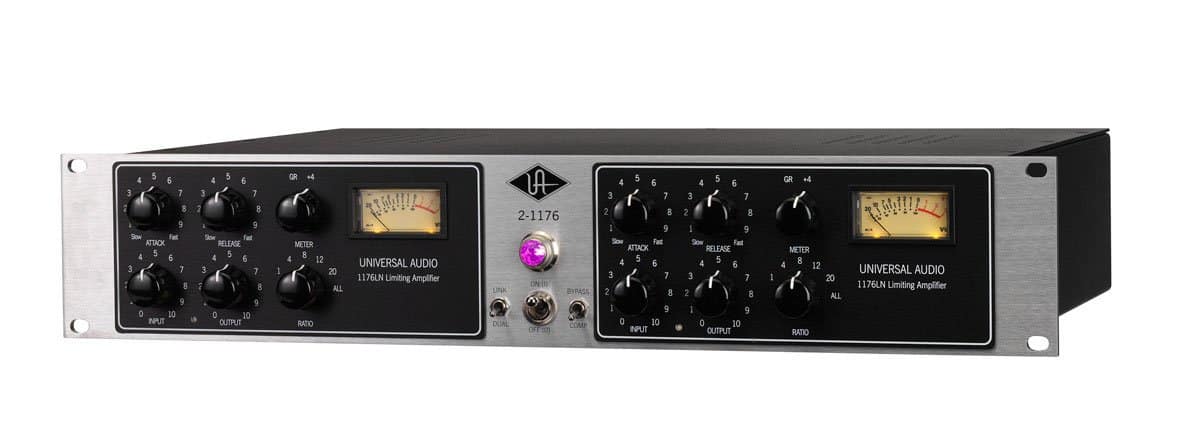

Instead of pushing one of the ratio buttons, PUSH ALL THE BUTTONS! This increases the amount of compression and distortion applied to the signal.

If you’re looking for a more aggressive sound, try the “British Mode” setting. Engineers adopted the mantra when setting their 1176’s: attack knob at 10 o’clock, release at 2 o’clock and the ratio at 4:1. Pepper ran this ridiculous commercial suggesting that you drink a bottle at 10 am, 2 pm and 4 pm for a sugar boost. The 1176 sounds great on many different instruments particularly drum room mics, bass guitars and vocals. But, if there is a continued state of heavy compression, it will exhibit a longer release to reduce pumping.” After a transient, it “releases quickly (50 mS to 1.1sec) to avoid level drops. It also features a variable release time. The attack time on the 1176 is hyper-fast 20 to 800 microseconds. The slower times are to the left and the faster times are to the right. The attack and release times are “backwards”.Instead there are four fixed ratio buttons: 4:1, 8:1, 12:1 and 20:1. Instead, compression is controlled by increasing or decreasing the input knob. The controls on the 1176 are a bit quirky: Some engineers feel the Rev C models have a slower response time and increased bass response. Rev C was released in 1970, featured a black faceplate and increased noise reduction. Rev A was the original silver model with a blue stripe. The 1176 uses a field-effect transistor (FET) to apply compression, which gives it a distinct “brightness, presence, and energy.” Released by Urei in 1967, it was the first “peak limiter” to use solid-state technology, instead of tubes. The 1176 is arguably the most well-known compressor in the world. FabFilter, Klanghelm, Kush Audio and Tokyo Dawn Records all have popular designs.

There are plenty of modern compressor plugins with unique sounds. *But why? What’s so special about the same four basic designs? Most of the compressors we use today are based on analog hardware units. Apparently, this whole time they were talking about compressors. But just like any other language, as you spend time with the locals you slowly start to pick it up. They talk about “gluing”, “crushing” and “smashing” instruments.Īt first, it seems shrouded in mystery. Phrases like “punch”, “bite” and “attack” are used to describe inanimate objects. It’s littered with seemingly random letters and numbers, like some kind of Cold War spy code. Seasoned audio engineers all speak a secret language.


 0 kommentar(er)
0 kommentar(er)
